The great depth of the holdings in science and technology reflects the University of Delaware’s program and research strength in these areas. The collections are strongest in the history of chemistry and engineering. The core of these holdings is the Unidel History of Chemistry Collection which contains nearly three thousand primary sources in the history of chemistry. The resources for the study of the history of chemistry are comprehensive, with over half the titles published prior to the chemical revolution of the 1780s, and extend into related areas such as alchemy, pharmacy, medical botany, and applications such as dyeing and bleaching and distillation. Among the earliest works in this collection are books on alchemy and natural philosophy, including works by the medieval alchemists Paracelsus (1493-1541), Raimundus Lullius (c. 1240-1315), and Albertus Magnus (c. 1200-1280).
An extensive collection of material on dyeing and bleaching ranges from scarce early works such as Gioanventura Rosetti (fl. 1530-1548), Libro di tentoria intitolato plicto, che insegna a tenger panni…,printed in Venice in 1565, and Allerley Matkel, printed in Germany in 1532, to eighteenth and nineteenth century manuals for dying cloth and paper. Of particular interest are the many books with samples of dyed fabric and paper such as Notice du vert de Chine et de la teinture en vert chez les chinois by M. Natalis Rondot (1858), The American Woolen Manufacturer by George C. Burns (1872), and The Dyeing of Paper Pulp (1901). Of related interest are a number of manuscript books of recipes and chemical formulas for dyeing and bleaching.
Books that document the history of engineering include the most important works published during the Renaissance in a number of different branches of engineering: electricity, mining, hydraulics, and mechanics. Of particular interest are the numerous works on fortifications and metallurgy. Many of the pivotal works of Renaissance engineering are present including Georgius Agricola, De re metallica (three editions, 1556, 1561, and 1657), Agostino Ramelli, Le Diverse et artificiose machine (1588), Jacques Besson, Theatrum instrumentorum et machinarum (1578), and Domenico Fontana, Della trasportatione dell’obelisco Vaticano (1590).
The works of such seminal figures as Archimedes, John Dalton, Albert Einstein, Galileo Galilei, Stephen Hales, Isaac Newton, Benjamin Franklin, and Antoine Lavoisier are present in first or early editions of their works, as are hundreds of treatises by their lesser-known contemporaries. A number of manuscript collections support the printed science and technology holdings. Among them are the John Shirley Collection of manuscripts related to the the Renaissance scientist, Thomas Harriot; the papers of chemist and geologist James C. Booth, the first State Geologist of Delaware; and the papers of Hippolyte Dussauce, an industrial chemist who immigrated to the United States from France in 1860.
The University of Delaware Library’s holdings are also extremely strong in the natural sciences. Horticulture, one of the most comprehensive collections, is covered separately. Zoology and related agricultural sciences, which support the University’s agriculture programs, are also significant. Of particular importance are the illustrated natural historybooks of the nineteenth century, including American Conchology and American Entomology by Thomas Say, Alexander Wilson’s American Ornithology, the 1846 edition of The Viviparous Quadrupeds of North America by John James Audubon, and the rare 1860 chromolithographic edition of Audubon’s Birds of America.
